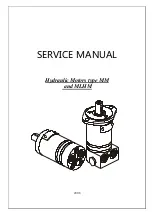
The Light Weight Engine Houtekietstraat 11
B-8540 Deerlijk, Belgium
EFFECTIVITY
page 23
ALL
19-3-2019
the flight should be aborted immediately. In case of a failure in flight the right reaction is very
important:
•
Failures indicated by the ECU
Basically there are two kinds of failure notification, an indication by a clear text message (if a
monitor is installed with this capability) or by the blinking or constant glowing, of the LED on the
ECU. The first kinds of failures are those of the sensors or deviations of the measurements, but
which is not an engine failure. For example, if the LED shows a constant glowing, the flight can
continue until you reach the next airfield or an appropriated landing area. It does not mean an
immediate danger. As for the second kind of failure, signalized by a fast blinking, this means that
an emergency landing is to be initiated immediately.
•
Loss of cooling liquid
Should your engine loose its cooling liquid during the flight (for example due a broken pipe) the
temperature will rise instantly and rapidly. An emergency landing has to be prepared for
immediately. The remaining run time of the motor without cooling liquid will be a few minutes,
this means that the power setting should be reduced to idle, the remaining running time may be
used just before landing.
•
Loss of power supply
In the case of low voltage , for example if the generator fails and the battery is not fully charged,
turn off all non essential electrical devices and immediately initiate your landing at the nearest
airfield. The remaining running time depends on the size and the loading status of the battery. If
two batteries are installed having together 4.5Ah the remaining running time will be between
about 20 and 30 minutes.
•
Sensor failure
Some sensors have built in redundancy; some values are in direct relation to other values. For
example the coolant is measured by two sensors, one to indicate to the pilot the temperature, the
second to supply the ECU with coolant temperature. If the indicated temperature of the water is
too high, but no warning comes from the ECU and the oil temperature shown is within the normal
range, then a damaged coolant sensor is suspected. Or if the oil temperature is extremely high but
the coolant temperature and the oil pressure are normal then probably the sensor is damaged. If
it seems to be likely that a sensor failure has occurred, it is not necessary to initiate an emergency
landing. Land on the nearest airfield and locate the problem.
•
Redundant systems
Some sensors and systems are redundant, for example the ignition, the crankshaft sensors, etc.
Other systems are optionally available as redundant, fuel pump, battery, generator or additional
injectors. Redundant systems serve to increase the reliability of the motor and NOT to allow flying
if one system fails. It is NOT allowed to take-off if one system failed on ground before take-off (for
















































